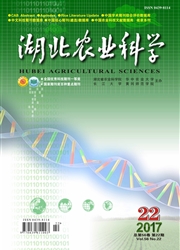

 中文摘要:
中文摘要:
对不同种植密度下香根草(Vetiveria zizanioides)的株高、分蘖数、地上生物量、地下生物量和根冠比进行了研究,以期为香根草规范化栽培提供理论依据。结果表明,在香根草生长前期,种植密度对株高、分蘖数增长的影响不显著;生长后期,种植密度对株高、分蘖数增长的影响显著,且低密度处理的香根草株高、分蘖数增长速度比高密度处理的快。生长前期,高密度处理(T4、T5)的香根草地上生物量大,处理T2(4株/m2)、T3(7株/m2)的地下生物量占优势;生长后期,处理T2、T3的地上生物量占优势,处理T1(1株/m2)的地下生物量占优势,所以低密度种植的香根草根冠比高于高密度种植的。4~7株/m2(T2、T3)为香根草的适宜种植密度。
 英文摘要:
英文摘要:
Aiming to provide a scientific basis for standardized cultivating measures,the effects of plantting density on plant height,tiller number,aboveground biomass,underground biomass and root to shoot ratio of vetiver were investigated.The results showed that,in the growth prophase,density had no siginificant influence on plant height and tiller number;however,at later stage,it became significant,and compared with the lower density treatment,the higher density treatment had higher plant height and faster tiller number increasing speed.In the early stage,T4,T5 treatments has bigger aboveground biomass,T2(4 plants/m2),T3(7 plants/m2) treatments had bigger underground biomass.At later stages,T2,T3 treatments had bigger aboveground biomass,T1(1 plants/m2) treatment had bigger underground biomass.So lower planting density had higher root to shoot ratio than higher density,and 4~7 plants / m2was the optimum planting density of vetiver.
 同期刊论文项目
同期刊论文项目
 同项目期刊论文
同项目期刊论文
 期刊信息
期刊信息
